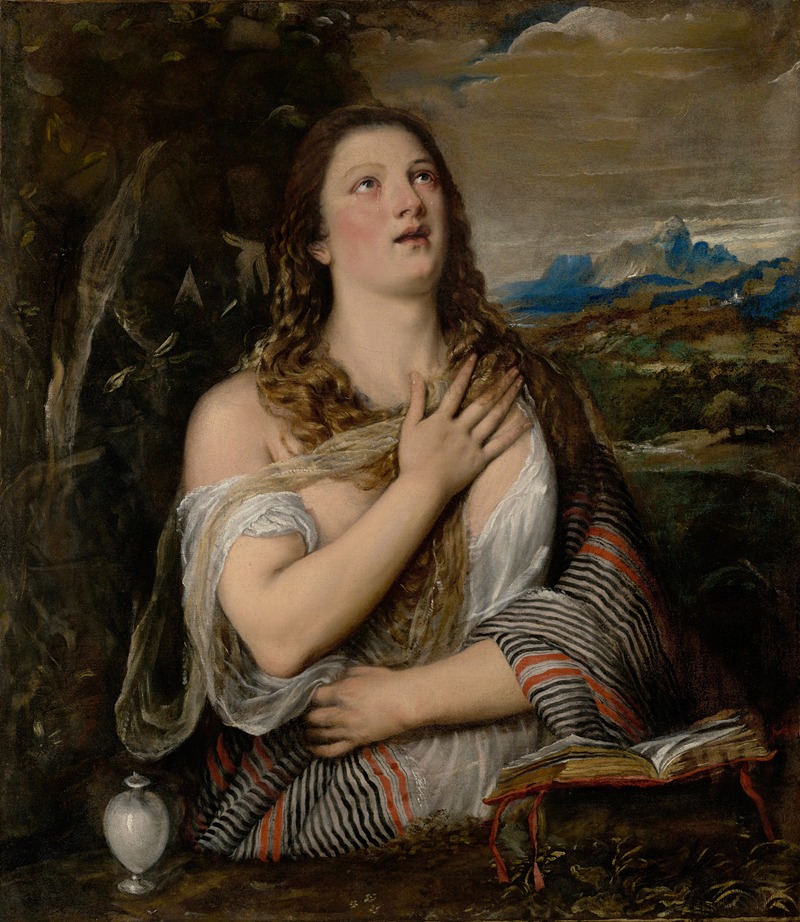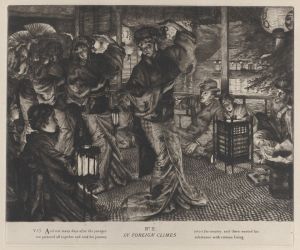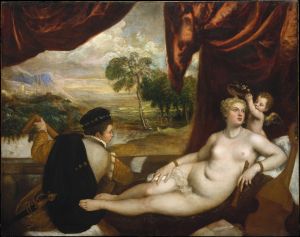
The Penitent Magdalene
A hand-painted replica of Titian’s masterpiece The Penitent Magdalene, meticulously crafted by professional artists to capture the true essence of the original. Each piece is created with museum-quality canvas and rare mineral pigments, carefully painted by experienced artists with delicate brushstrokes and rich, layered colors to perfectly recreate the texture of the original artwork. Unlike machine-printed reproductions, this hand-painted version brings the painting to life, infused with the artist’s emotions and skill in every stroke. Whether for personal collection or home decoration, it instantly elevates the artistic atmosphere of any space.
"The Penitent Magdalene" is a renowned painting by the Italian Renaissance master Titian, created around 1565. This artwork is one of several versions of the same subject painted by Titian, reflecting his fascination with the theme of Mary Magdalene, a figure who has been depicted in various ways throughout art history. The painting is notable for its emotional depth and the masterful use of color and light, characteristic of Titian's mature style.
In this painting, Mary Magdalene is depicted in a moment of repentance and reflection. She is shown with long, flowing hair, which is a traditional attribute associated with her, symbolizing both her past as a sinner and her subsequent penitence. Her hair cascades down her shoulders, partially covering her body, which is modestly draped in a loose garment. The expression on her face is one of deep contemplation and sorrow, capturing the essence of her repentance.
Titian's use of color is particularly striking in "The Penitent Magdalene." The warm tones of her skin and hair contrast with the cooler, darker background, drawing the viewer's attention to her face and expression. The play of light and shadow across her figure adds a sense of three-dimensionality and realism, enhancing the emotional impact of the scene. This technique is a hallmark of Titian's work, showcasing his ability to convey complex emotions through subtle variations in color and light.
The setting of the painting is relatively simple, focusing primarily on the figure of Magdalene herself. This simplicity serves to emphasize her emotional state and the spiritual nature of her repentance. The background is dark and nondescript, allowing the viewer to concentrate on the figure without distraction. This approach is typical of Titian's later works, where he often focused on the psychological depth of his subjects rather than elaborate settings.
"The Penitent Magdalene" reflects the Renaissance interest in human emotion and the exploration of religious themes through personal experience. Mary Magdalene was a popular subject during this period, as her story of sin and redemption resonated with contemporary audiences. Titian's portrayal of her as a penitent sinner seeking forgiveness aligns with the Catholic Church's emphasis on repentance and redemption during the Counter-Reformation.
Titian's influence on the art world was profound, and his depiction of Mary Magdalene has inspired countless artists in the centuries following its creation. His ability to convey the complexity of human emotion through his masterful use of color and composition has cemented his reputation as one of the greatest painters of the Renaissance.
Today, "The Penitent Magdalene" is housed in the Hermitage Museum in St. Petersburg, Russia, where it continues to be admired by art enthusiasts and scholars alike. The painting remains a testament to Titian's skill and his ability to capture the essence of human emotion, making it a significant work in the history of Western art.


















